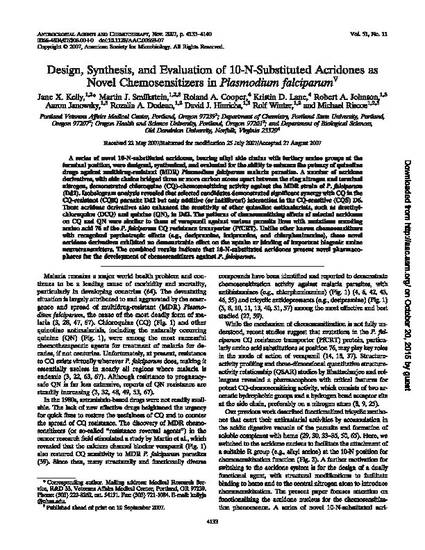
A series of novel 10-N-substituted acridones, bearing alkyl side chains with tertiary amine groups at the terminal position, were designed, synthesized, and evaluated for the ability to enhance the potency of quinoline drugs against multidrug-resistant (MDR) Plasmodium falciparum malaria parasites. A number of acridone derivatives, with side chains bridged three or more carbon atoms apart between the ring nitrogen and terminal nitrogen, demonstrated chloroquine (CQ)-chemosensitizing activity against the MDR strain of P. falciparum (Dd2). Isobologram analysis revealed that selected candidates demonstrated significant synergy with CQ in the CQ-resistant (CQR) parasite Dd2 but only additive (or indifferent) interaction in the CQ-sensitive (CQS) D6. These acridone derivatives also enhanced the sensitivity of other quinoline antimalarials, such as desethylchloroquine (DCQ) and quinine (QN), in Dd2. The patterns of chemosensitizing effects of selected acridones on CQ and QN were similar to those of verapamil against various parasite lines with mutations encoding amino acid 76 of the P. falciparum CQ resistance transporter (PfCRT). Unlike other known chemosensitizers with recognized psychotropic effects (e.g., desipramine, imipramine, and chlorpheniramine), these novel acridone derivatives exhibited no demonstrable effect on the uptake or binding of important biogenic amine neurotransmitters. The combined results indicate that 10-N-substituted acridones present novel pharmacophores for the development of chemosensitizers against P. falciparum.
Copyright © 2007 American Society for Microbiology. All rights reserved.
Available at: http://works.bepress.com/roland_cooper/23/
